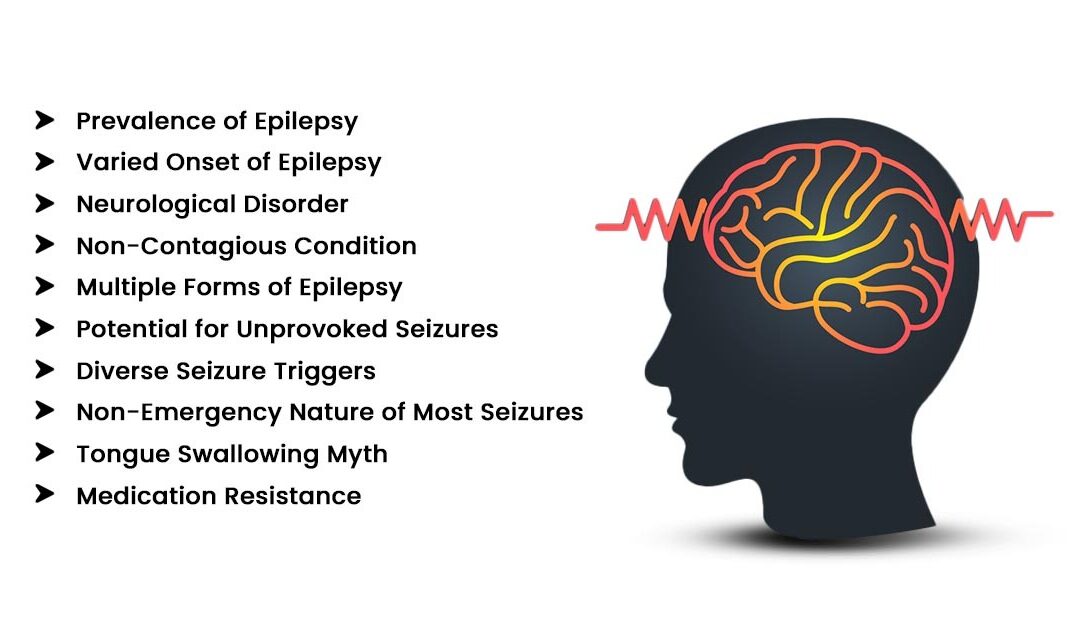Epilepsy is a neurological condition that, despite being prevalent, often remains shrouded in misconception and stigma. The more discussions we have about epilepsy, the greater the understanding and awareness will be. Here are ten facts that can illuminate the reality of this condition and foster conversations about living with epilepsy.
1. Prevalence of Epilepsy
Epilepsy is a universal condition, affecting nearly 65 million people globally. It’s important for people everywhere to acknowledge that epilepsy is common and represents a significant public health concern.
2. Varied Onset of Epilepsy
Epilepsy can manifest in one in 26 individuals during their lifetimes. The onset is multifaceted; some inherit it, others acquire it due to febrile illnesses affecting the brain, or after enduring a stroke or brain injury. However, for numerous individuals, the causes of their seizures remains undetermined.
3. Neurological Disorder
Epileptic seizures result from disruptions in the brain’s electrical signaling. The brain comprises millions of cells, communicating through organized electrical signals. For those experiencing an epileptic seizure, these signals become disordered, prompting anomalous behaviors.
4. Non-Contagious Condition
Epilepsy is not transmissible. It’s pivotal to dispel the misconception that the condition can be ‘caught’ from another individual, fostering a more inclusive and empathetic understanding.
5. Multiple Forms of Epilepsy
The term “epilepsy” encompasses a spectrum of brain conditions instigating the occurrence of two or more seizures. The manifestations of seizures are diverse and necessitate different management and treatment strategies. While generalized tonic-clonic seizures are the most recognized form, numerous other variations exist, each with unique characteristics.
6. Potential for Unprovoked Seizures
Approximately one in ten individuals will experience an unprovoked seizure in their lifetime, even without an epilepsy diagnosis. Various factors such as hypoglycemia, dehydration, illicit drug usage, and fevers can induce seizures.
7. Diverse Seizure Triggers
Individuals living with epilepsy may discern specific triggers associated with their seizures. While photosensitive epilepsy, induced by flashing lights, is well-known, it is relatively uncommon, affecting less than 5% of individuals. More prevalent triggers include stress, fatigue, and missed medication doses.
8. Non-Emergency Nature of Most Seizures
The majority of seizures are not medical emergencies and typically last between a few seconds to two minutes. However, providing immediate support is vital: stay with the person, ensure their safety by removing harmful objects, and, if possible, position them on their side. For protracted seizures exceeding five minutes, immediate medical attention is crucial, as prolonged seizures, termed ‘status epilepticus,’ can be life-threatening.
9. Tongue Swallowing Myth
It’s impossible to swallow one’s tongue during a seizure due to the anchoring muscle fibers. Introducing objects into the mouth during a seizure is hazardous as it may obstruct the airway.
10. Medication Resistance
Anti-epileptic drugs (AEDs) are the frontline treatment post-diagnosis, and while effective for approximately two-thirds of individuals, a significant one-third experience medication resistance, necessitating exploration of alternative therapeutic avenues.
By illuminating these facets of epilepsy, we can contribute to a more informed and empathetic dialogue surrounding the condition, fostering support and understanding for the millions navigating life with epilepsy.

